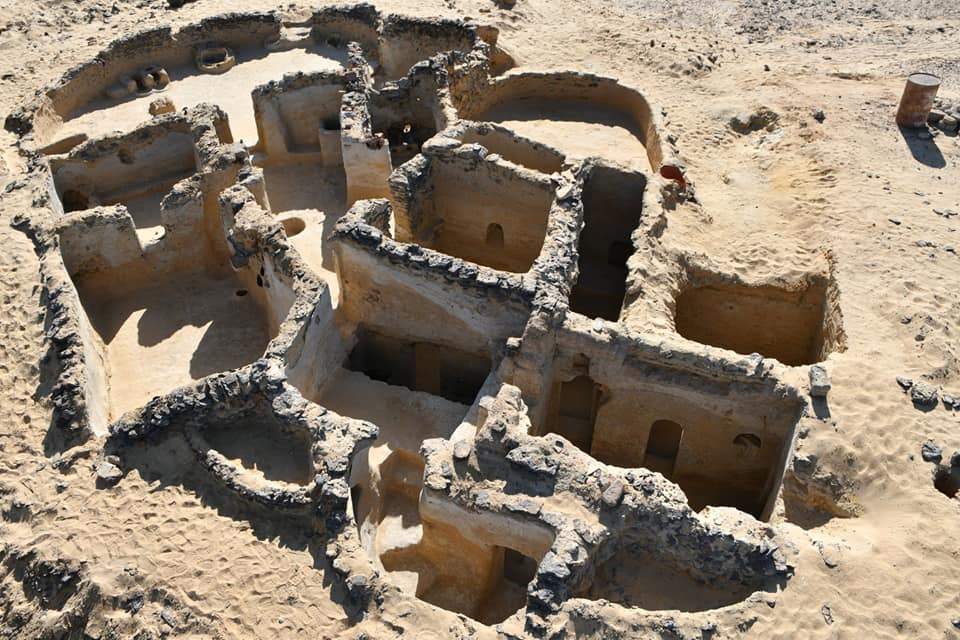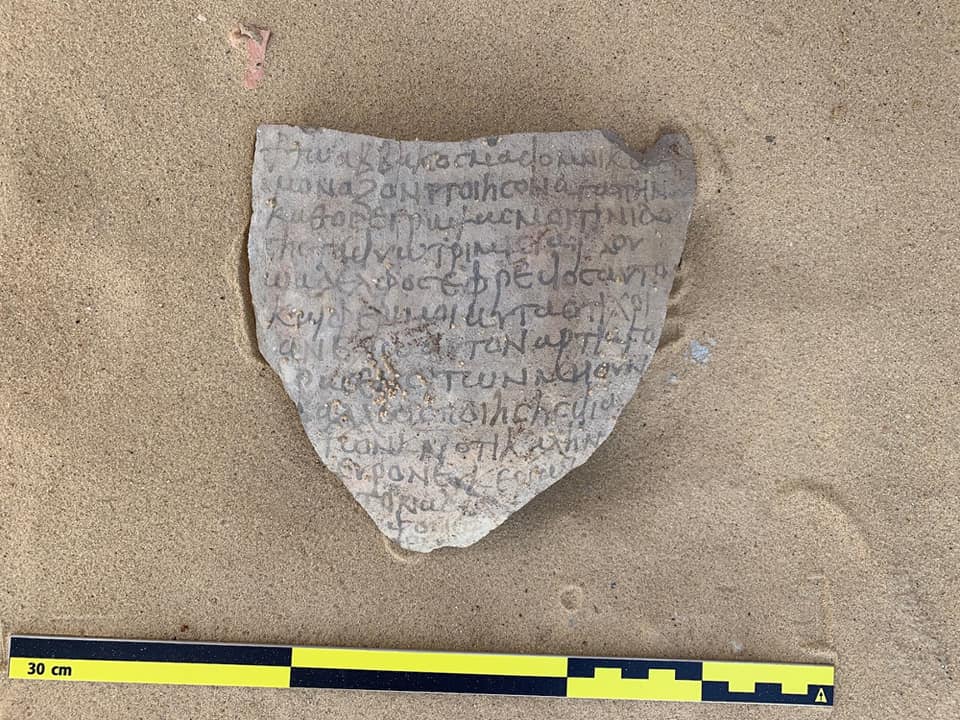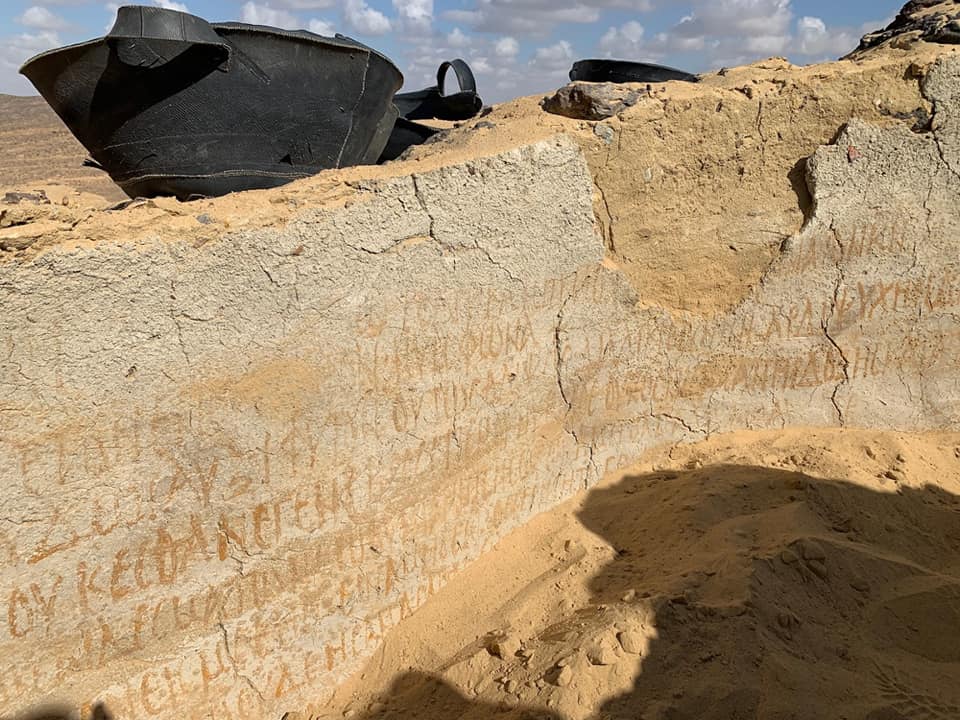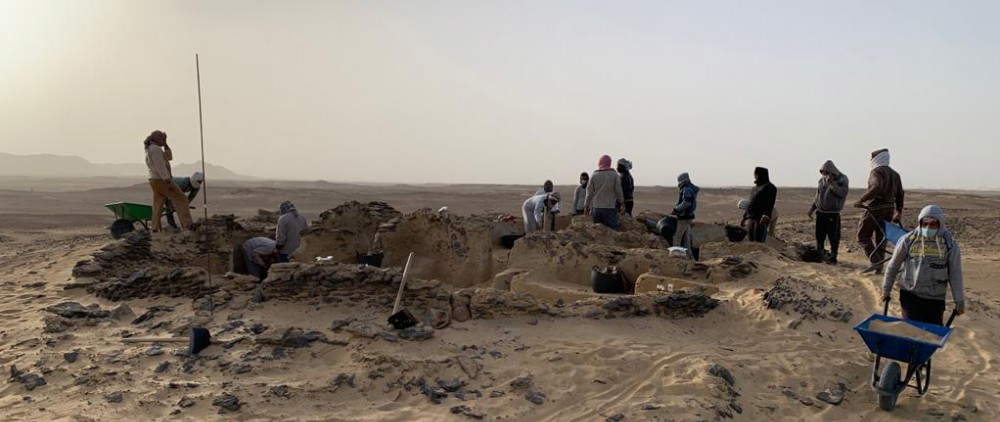A French-Norwegian archaeological mission, led by theInstitut français d’archéologie orientale, revealed over the weekend that it has discovered the oldest known Christian monastery in Egypt. The site was found in the Bahariya oasis in the middle of the desert, a distance of about 370 kilometers from the capital Cairo. “The French-Norwegian mission,” Egypt’s Ministry of Antiquities explained in a statement released Saturday, “discovered, during its third excavation campaign at the site of Tal Ganoub Qasr-al Agouz in the oasis of Bahariya, many buildings built of basalt, others carved in rock and others made of clay bricks.” The complex is divided into six sectors, where the ruins of three churches and monastic cells were found whose walls show graffiti and symbols with inscriptions related to Coptic culture. Numerous ostrakas (fragments of pottery) with Greek inscriptions referring to the monks were also found. A number of biblical passages in Greek were also found on the wall of one church, from which important information about monastic life in the area is derived. The discovery was made last year, but excavations in this area began a decade ago.
The building dates back to the fourth century A.D., the head of the mission, Victor Ghica of the Norwegian School of Theology, Religion and Society, a specialist in late antique archaeology, fourth-century Christianity and Coptic papyrology, explained to the press. This is a very important discovery because the written sources of the time that speak of the areas inhabited by Christian monks make no mention of this area. Ghica explained that we have certainty that this is a fourth-century site because of the number and type of evidence that has emerged: the pottery, radiocarbon dating, glass material, and coins. According to the archaeologist, the site was founded in the mid-4th century, making it the oldest known Christian monastery in Egypt.
 |
| The monastery. Ph. Ministry of Antiquities of Egypt |
 |
| The monastery. Ph. Ministry of Antiquities of Egypt. |
 |
| The monastery. Ph. Ministry of Antiquities of Egypt |
The discovery, Ghica revealed, offers a different picture of early monasticism than that reported in official Church texts, because it shows that those texts were produced on the basis of a political agenda, which sought to create a vision of monasticism centered on a few founding figures. The discovery thus shows that, in addition to the founding figures of monasticism, there were also other groups, and that early monasticism was richer than the literary sources tell us. “The excavation,” said the mission chief, “reveals new aspects of the origins of monasticism in Egypt. And the borders of Egypt are at the center of the archaeology of early monasticism.”
The monastery, technically, is a "laura,“ a term in Eastern Christianity for a small monastic settlement made up of a series of cells gathered around a refectory and a church. The monks who inhabited it lived independently but formed a small community. The site, the mission noted, has portions that are in an ”exceptional state of preservation": in particular, of four out of six buildings, intact walls have been found, in some cases even roofs and floors. And although many portions of the site have been destroyed over the centuries, some have re-emerged in excellent condition, which makes it possible to draw a great deal of information.
The settlement was inhabited in all likelihood from the fourth to the sixth century AD, at which time it was abandoned, although it continued to be visited over the next two centuries, according to the finds that have surfaced. Instead, its heyday was the 5th century, the period to which the most important finds date. In ancient times the monastery was located about a couple of kilometers away from the nearest inhabited village. This last fact, Ghica explained, is interesting because the isolation of the monks we read about in the literature is relative: the monks were isolated but never too far away because they had needs (in the absence of land to cultivate, they depended on neighbors or travelers who frequented the area for their food). This important discovery thus opens up new perspectives for the study of early monasticism, Mission concludes.
 |
| Victor Ghica |
 |
| The excavation. Ph. Victor Ghica |
 |
| Major archaeological discovery: oldest Christian monastery in Egypt resurfaces |
Warning: the translation into English of the original Italian article was created using automatic tools. We undertake to review all articles, but we do not guarantee the total absence of inaccuracies in the translation due to the program. You can find the original by clicking on the ITA button. If you find any mistake,please contact us.